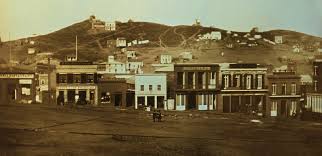In the year 1850, two iconic cities on the West Coast of the United States, Los Angeles and San Francisco, officially became incorporated as cities, marking significant milestones in their respective histories and setting the stage for their future growth and development. The founding of these cities in 1850 reflected the rapid expansion of the United States into the western frontier and the increasing importance of California as a hub of economic activity, cultural diversity, and social change. Los Angeles, located in Southern California, was founded in 1781 by Spanish settlers and had grown steadily over the years as a center of agriculture, ranching, and trade. In 1850, following the signing of the Treaty of Guadalupe Hidalgo, which ended the Mexican-American War and ceded California to the United States, Los Angeles officially became an American city. The incorporation of Los Angeles as a city in 1850 marked a new chapter in its history, as it became a vital hub of commerce, transportation, and culture in the burgeoning state of California. San Francisco, situated in Northern California, had experienced a rapid influx of settlers and fortune-seekers during the California Gold Rush of 1849, transforming the small settlement into a bustling metropolis virtually overnight. The city's population boomed as miners, merchants, and immigrants from around the world flocked to San Francisco in search of wealth and opportunity. In 1850, San Francisco was formally incorporated as a city, solidifying its status as a major urban center and economic powerhouse on the West Coast. The incorporation of Los Angeles and San Francisco as cities in 1850 reflected the changing landscape of California and the broader American West during this period. The Gold Rush had brought a wave of newcomers to the region, transforming sleepy settlements into vibrant cities teeming with energy, diversity, and ambition. Los Angeles and San Francisco emerged as key players in the economic and social life of California, attracting settlers, entrepreneurs, and adventurers from all walks of life. The founding of Los Angeles and San Francisco as cities in 1850 also laid the groundwork for their future growth and development as iconic urban centers with distinct identities and cultural landscapes. Los Angeles, known for its warm climate, sprawling suburbs, and entertainment industry, would go on to become a global hub of film, television, and popular culture. San Francisco, with its picturesque bay, iconic landmarks, and vibrant neighborhoods, would evolve into a leading center of technology, innovation, and progress. The incorporation of Los Angeles and San Francisco as cities in 1850 also reflected the changing demographics and social dynamics of California during this period. The Gold Rush had attracted a diverse array of settlers to the region, including Chinese immigrants, European immigrants, and African Americans, contributing to the rich tapestry of cultures and communities that defined both cities. Los Angeles and San Francisco became melting pots of diversity, creativity, and resilience, shaping the identities of these cities for generations to come.
1850 U.S.A. – Los Angeles and San Francisco become cities
